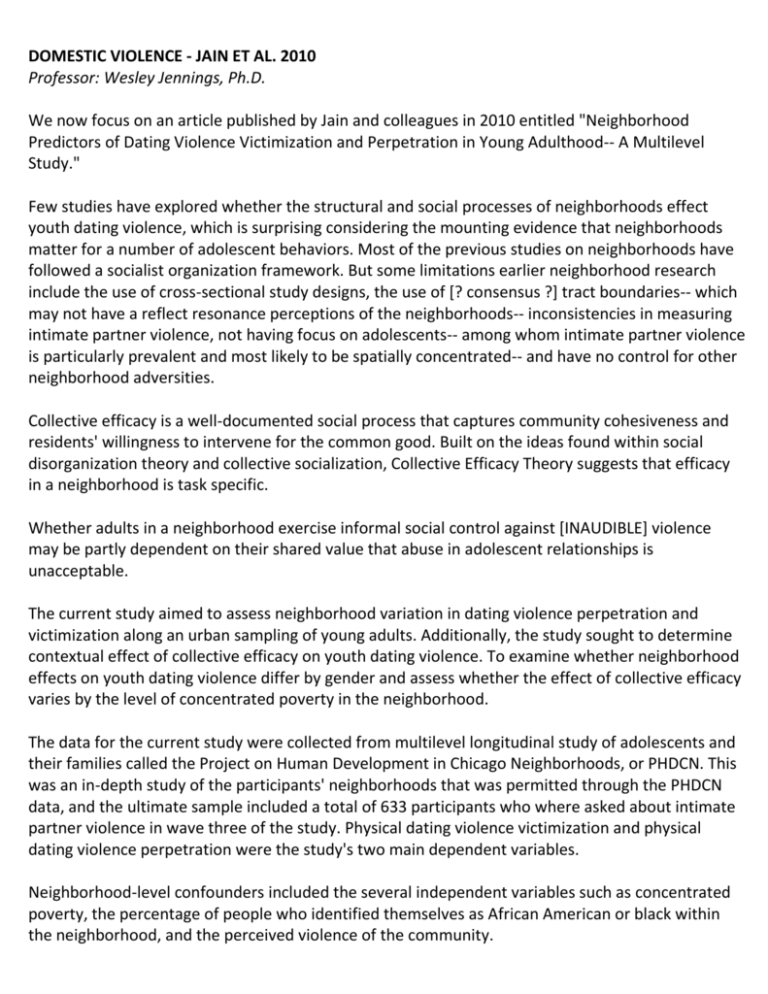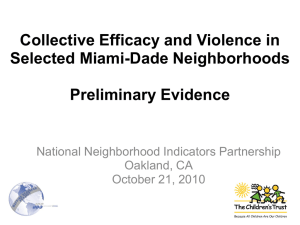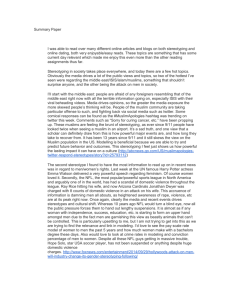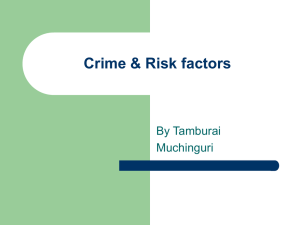ccj4681_jennings_transcript_jain
advertisement

DOMESTIC VIOLENCE - JAIN ET AL. 2010 Professor: Wesley Jennings, Ph.D. We now focus on an article published by Jain and colleagues in 2010 entitled "Neighborhood Predictors of Dating Violence Victimization and Perpetration in Young Adulthood-- A Multilevel Study." Few studies have explored whether the structural and social processes of neighborhoods effect youth dating violence, which is surprising considering the mounting evidence that neighborhoods matter for a number of adolescent behaviors. Most of the previous studies on neighborhoods have followed a socialist organization framework. But some limitations earlier neighborhood research include the use of cross-sectional study designs, the use of [? consensus ?] tract boundaries-- which may not have a reflect resonance perceptions of the neighborhoods-- inconsistencies in measuring intimate partner violence, not having focus on adolescents-- among whom intimate partner violence is particularly prevalent and most likely to be spatially concentrated-- and have no control for other neighborhood adversities. Collective efficacy is a well-documented social process that captures community cohesiveness and residents' willingness to intervene for the common good. Built on the ideas found within social disorganization theory and collective socialization, Collective Efficacy Theory suggests that efficacy in a neighborhood is task specific. Whether adults in a neighborhood exercise informal social control against [INAUDIBLE] violence may be partly dependent on their shared value that abuse in adolescent relationships is unacceptable. The current study aimed to assess neighborhood variation in dating violence perpetration and victimization along an urban sampling of young adults. Additionally, the study sought to determine contextual effect of collective efficacy on youth dating violence. To examine whether neighborhood effects on youth dating violence differ by gender and assess whether the effect of collective efficacy varies by the level of concentrated poverty in the neighborhood. The data for the current study were collected from multilevel longitudinal study of adolescents and their families called the Project on Human Development in Chicago Neighborhoods, or PHDCN. This was an in-depth study of the participants' neighborhoods that was permitted through the PHDCN data, and the ultimate sample included a total of 633 participants who where asked about intimate partner violence in wave three of the study. Physical dating violence victimization and physical dating violence perpetration were the study's two main dependent variables. Neighborhood-level confounders included the several independent variables such as concentrated poverty, the percentage of people who identified themselves as African American or black within the neighborhood, and the perceived violence of the community. Also, there were neighborhood-level predictors, which included collective efficacy, the social cohesion scale, and informal social control. Finally, the study accounted for individual-level confounders, which included age, gender, parental education, and race ethnicity. This study yielded some interesting results. For example, for males, collective efficacy remained a significant independent negative predictor of youth dating violence victimization, but it had no association for females. In addition, the results showed that a collective efficacy in other neighborhood variables were not significant predictors of youth dating violence and perpetration, and that higher collective efficacy lowered the risk of male perpetration in neighborhoods of low commit property. It was also noted that neighborhoods of highest level poverty showed a positive association between collective efficacy and the perpetration of youth dating violence. This study was one of the first to provide empirical evidence that neighborhood context matters for youth dating violence above and beyond individual characteristics. The analyses also showed that none of the individual predictors besides race and ethnicity were significant in gender specific models. A positive association between concentrated poverty in youth dating violence was also found, although much of this association disappeared when individual level of controls or collective efficacy were included. For all the use, collective efficacy was more prominent for dating violence victimization than for perpetration. The findings also showed in the protective effects of collective efficacy on the youth dating violence varied by gender, and a significant proportion of variation in dating violence among young men was explained by neighborhood factors. Lastly, the results suggested that collective efficacy may influence younger women differently than it does or ones and may be more relevant for severe forms of victimization. One of the limitations of this research was its measurement of physical abuse only with no inclusion of sexual assault or other types of abuse such as psychological abuse. As such, this exclusion may have led to an underestimation of intimate partner violence among the sample. There's also the possibility of reporting bias, typically associated with self-reported data, which can pose limitations. It should also be noted that since the sample consisted of urban adolescents, the research findings are not necessarily generalizable to youth in rural areas or to married couples. Nevertheless, the use of multilevel perspective in methods, the use of a longitudinal research design, and the use of a community-based ethnically diverse sample of both young men and young women across a range of social class are highlighted as strength of this research. Ultimately, the results of this study indicate that community residents in urban neighborhoods can collectively exercise informal social control among its youth in order to reduce dating violence. With this in mind, community capacity-building efforts should be expanded to measure and prevent youth dating violence. Adolescent dating violence may be more responsive to community-level change compared to adult intimate partner violence.









